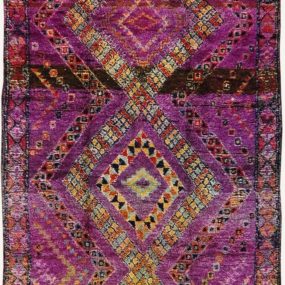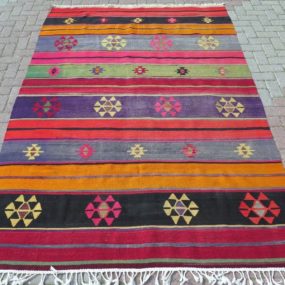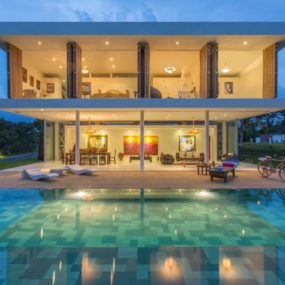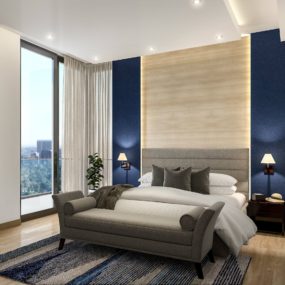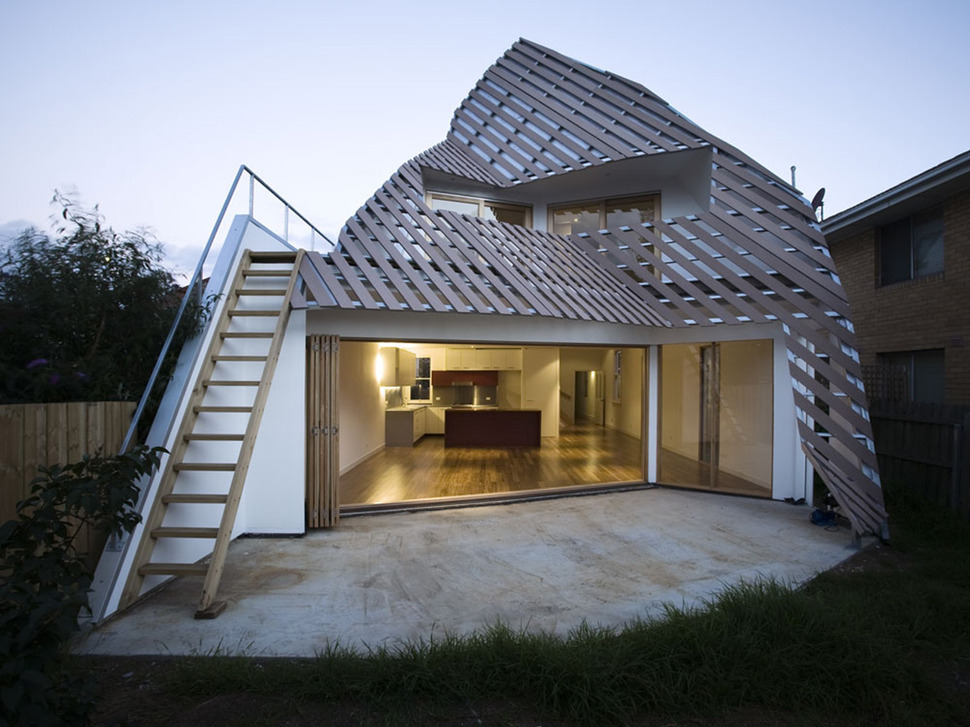
The Foyn-Johanson House in Northcote, Australia was designed by Harrison and White specifically to allow the sun’s rays to shine down and into the garden’s growing area all day so that the homeowner is able to grow as much of their own food as possible. With a small lot size and neighbours close by, this took ingenuity, creativity and careful planning with the assistance of computer programs to figure out the required angles and voids without compromising the living space within the home itself.
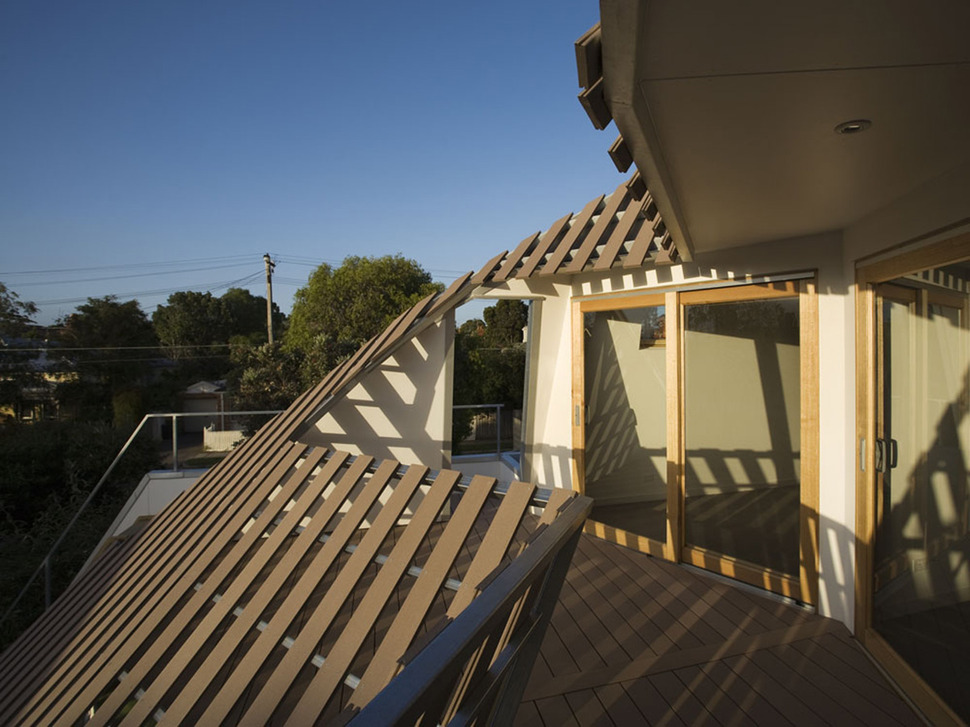
The process is arrived at by what is referred to as reverse shadow casting. Fist the barn like home was designed to its maximum height of 9 meters, and then areas are subtracted from it to allow for sun corridors. The surface of the residence is then covered by the artificial timber slatting as a sun shade and balustrade for the west facing deck and façade.
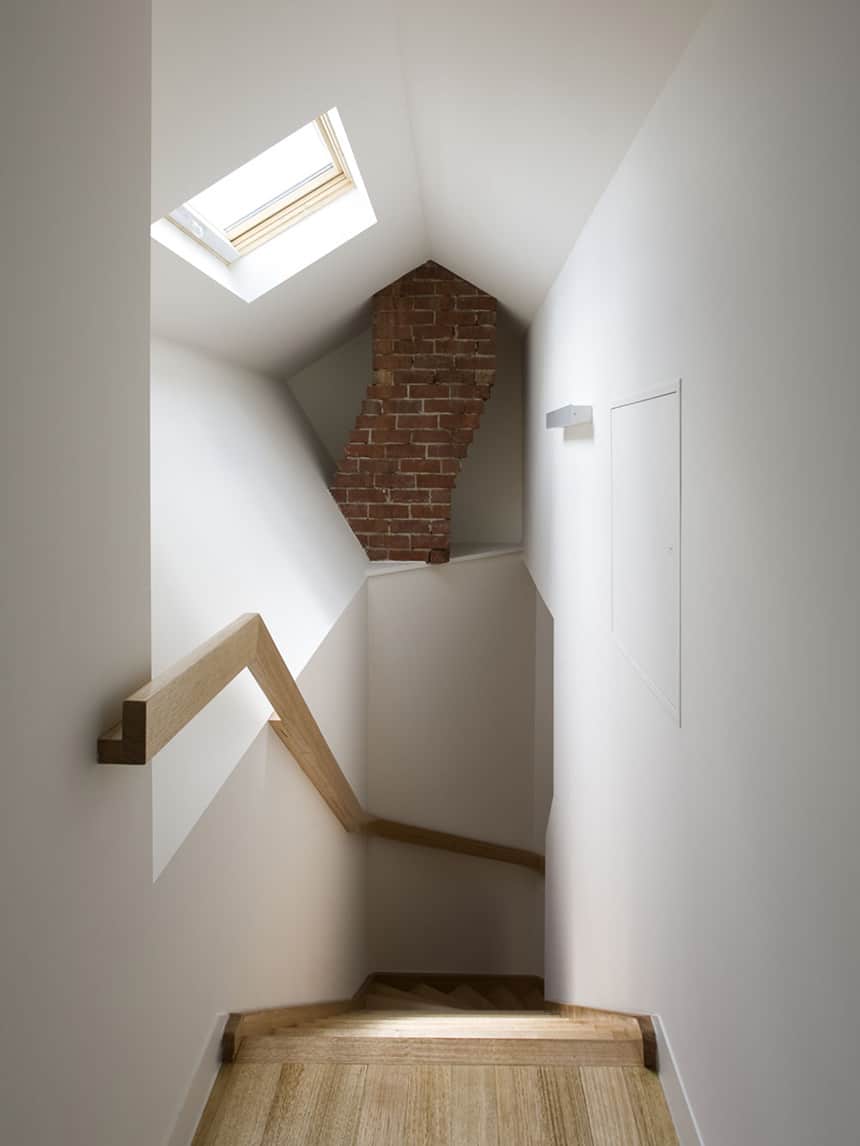
An open living volume is located on the ground level of two bedrooms and bathrooms and a narrow stairwell leads up to an attic level under the ridge that has views towards the city.
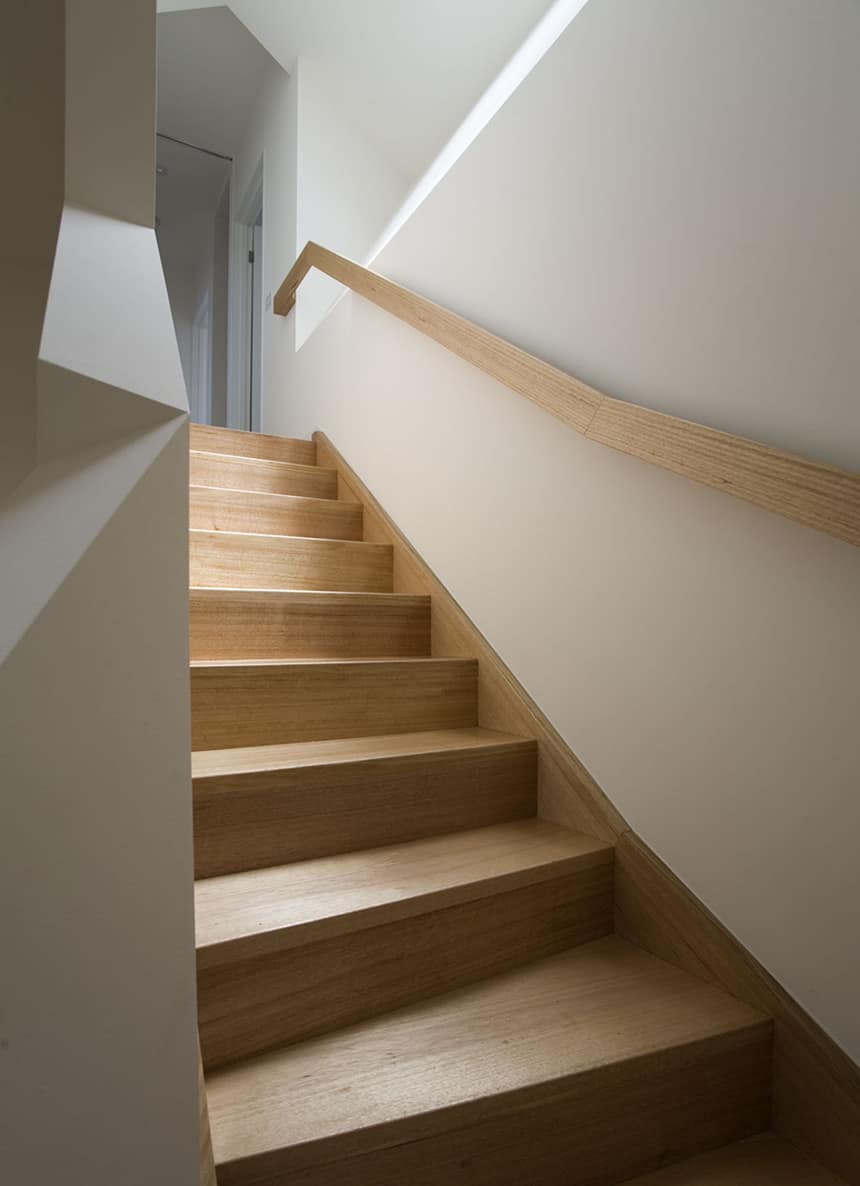
The stairwell corridor also incorporates unusual angles both along the bottom wall and on the slight turning of the first few stairs.

The side walling is treated like a roof an the continues “skin” of the slatting camouflages what is deck and what is building.

The slatting allows views through its framework.to the cityscape beyond. It also offers much needed shade on those extra hot Australian days.
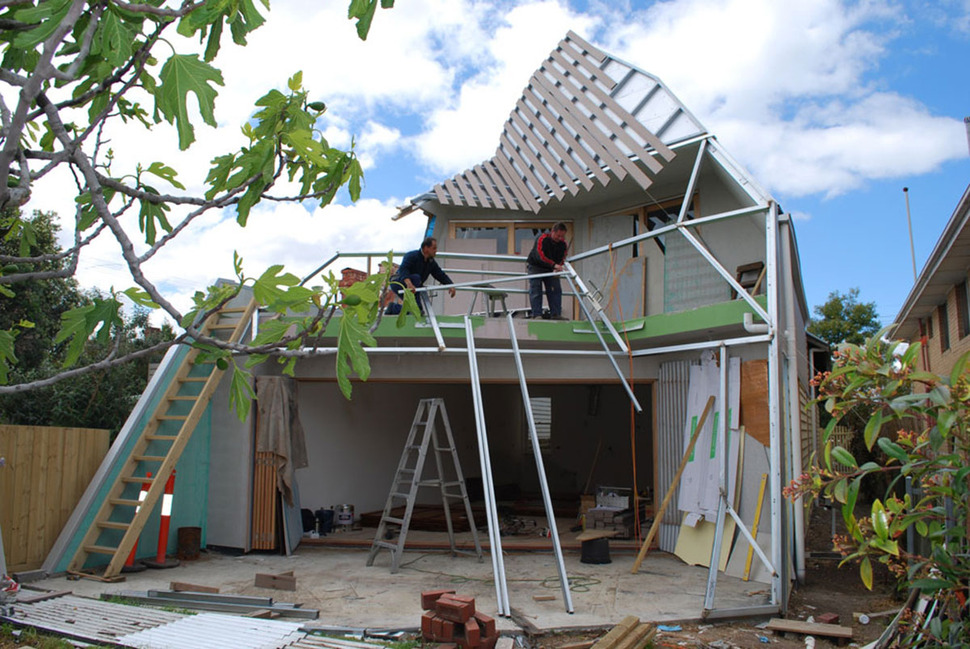
The complex angles of the slatted skin required the use of a digital model to map out the construction. Both the digital model and documentation drawings in 2D and 3D where used to create the on site so that the builders and subcontractors could understand the design. Because of the complexity of the angles, string was used to map out the 3D geometry throughout the framing processing.
Harrison and White

